How the Cambridge C1 Writing Part is Scored
What you will find in this guide:
How the Cambridge C1 Writing Part is Scored
The Cambridge C1 Advanced exam, also known as CAE, is a high-level English language proficiency test that is recognized by many educational institutions and businesses worldwide. One of the key components of this exam is the writing part. In this blog post, we will delve into how the writing part of the Cambridge C1 exam is scored.
Understanding the Cambridge English Writing Assessment Scale
The Cambridge English Writing Assessment Scale is used to assess the writing part of the C1 Advanced exam1. This scale is designed to provide a clear and detailed understanding of a candidate’s performance in the writing part of the exam1.
Scoring Criteria
The scoring of the writing part is based on three main criteria2:
- Content: This refers to how well the candidate has fulfilled the task, if they have included all the necessary information, and if the target reader is fully informed.
- Organisation: This refers to how the text is organized, including the use of linking words and organizational patterns.
- Language: This refers to the range of vocabulary and grammatical structures, the level of accuracy, and the appropriateness of the language to the task.
Each of these criteria is scored from 0 to 52.
Calculation of the Score
In the C1 Advanced exam, candidates receive a separate score for each of the four skills (reading, writing, listening, and speaking) and use of English3. Each of the skills and Use of English are equally weighted, and a candidate’s overall score is calculated by adding all of the individual scores together and dividing by five2.
For the writing part, there are two items, and each item can score up to 20 points, making a total of 40 points4.
Understanding Your Score
If a candidate scores Band 3 or above in the C1 Advanced exam, this generally indicates an ability of at least CEFR C1 level. Bands 1 and 2 indicate that the learner is still performing at B2 level1.
Sample Essay with Commentary form Cambridge
In regard of a recent discussion about the facilities, which are financially supported by local authorities, I would like to write a few of my personal thoughts. Whether we are talking about sports centres or public gardens, there is no doubt that they are both a good thing to have in the city and should both be supported somehow. The only question then is which one of these is more important, what are the pros and cons of each one?
Let me start with the sport centres as I think these are a bit more problematic. Obviously, in our times where lots of people spend days sitting in their office staring at a computer, some sort of physical training is very important. We have to balance that shift in our lifestyles. The problem I see with supporting the sports centres is the number of activities that you can do at these days. There is almost countless list of either individual or team sports that we can think of, and each centre is usually designed for a specific type or at least a group of sports similar in its nature. Therefore I think that it is too difficult to support them equally and we can’t say which activity is better than the others either. Another reason for not financing sports as much as green parks is their commercial use. What I mean by that is that we usually pay for everything the centre offers us to do and therefore they are more able to last from their own money than gardens.
Regarding of the green spaces, the situation is much clearer I think. Every city needs gardens where people can sit and relax, but nobody is going to pay a tax for just walking around.
These factors lead me to my conclusion, that the public gardens are definitely a facility which should be financed from public money, whereas in the case of sports centres, the situation is questionable.
SUBSCALE MARK COMMENTARY
Content Score: 5
All content is relevant to the task and the target reader would be fully informed. The candidate discusses two of the options (sports centres and green spaces). Although the essay is slightly unbalanced, focusing mainly on sports centres, this is justified in the essay: Let me start with the sport centres as I think these are a bit more problematic. Likewise, the brief treatment of parks is explained, and what follows is enough to inform the reader fully: Regarding of the green spaces, the situation is much clearer.
Communicative Achievement Score 4
The conventions of the communicative task are used effectively, holding the target reader’s attention with ease. The register and tone are consistent and the language choices are sufficiently formal and appropriate throughout, particularly the opening and closing paragraphs; The only question then is which one of these is more important, what are the pros and cons of each one?; These factors lead me to my conclusion. There is lots of personal opinion, rather than objective opinion based on a generally assumed view: I would like to write a few of my personal thoughts; I think these are; The problem I see, but straightforward and more complex ideas are nevertheless communicated. A more objective approach would have been more suited to this essay task, which is to discuss the idea in general terms rather than in the candidate’s own experience.
Organisation Score: 4
The essay is well organised and coherent, and the different ideas are clearly signposted throughout: Let me start with; Therefore; Another reason; Regarding. The target reader can easily follow the argument. The paragraphs are internally well constructed, and are linked together appropriately. In terms of organisational patterns, the overall effect is generally good, rather than good throughout, due to the imbalance of length between the second and third paragraphs.
Language Score 4
A range of vocabulary, including less common lexis, is used effectively, although not always precisely: We have to balance that shift in our lifestyles. A wide range of simple and complex grammatical forms is used with control and flexibility, particularly in terms of sentence construction: Obviously, in our times where lots of people spend days sitting in their office staring at a computer, some sort of physical training is very important. Although there are occasional errors, these are often slips and do not impede communication: you can do at these days; There is almost countless list.
Conclusion
Understanding how the writing part of the Cambridge C1 exam is scored can help candidates prepare more effectively for the exam. By focusing on content, organization, and language use, candidates can aim to achieve a high score in the writing part of the exam.
Remember, practice makes perfect. So, keep practicing your writing skills and good luck with your exam preparation!
1: Assessing writing for Cambridge English Qualifications: A guide for teachers 2: The Cambridge English Scale explained 3: C1 Advanced results | Cambridge English 4: How to Calculate the Score of Your Cambridge Exam
FAQ
The Writing paper of the Cambridge C1 Advanced exam consists of two parts: One Essay and one task where you can choose your task from given options.
You are required to choose one type of writing in the second task. Your options are: Writing a letter, an email, a proposal, a report, and a review.
The Writing paper is assessed based on your control of a range of language, correct use of grammar structures, specificity of words or structures to express your ideas, and the effective use of functional language to persuade, agree, or compare






